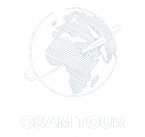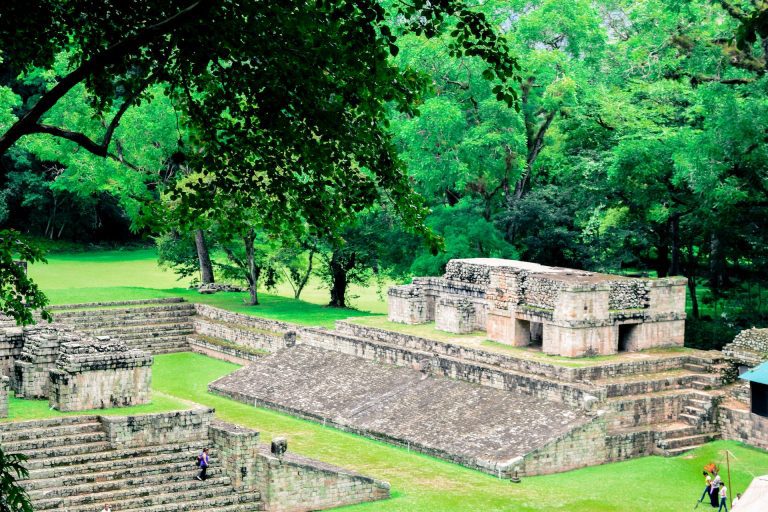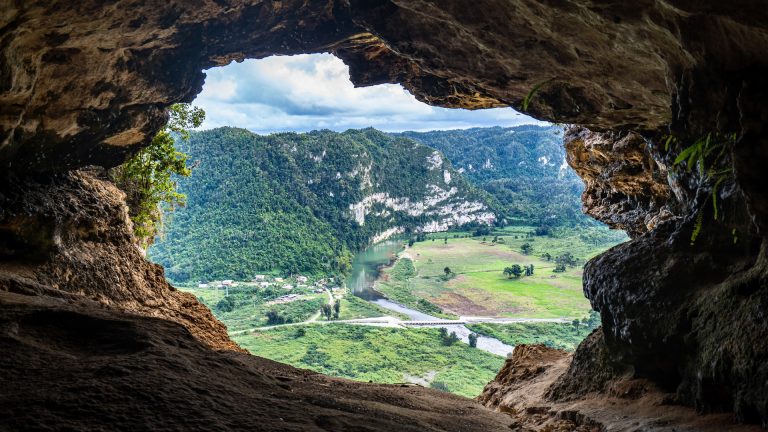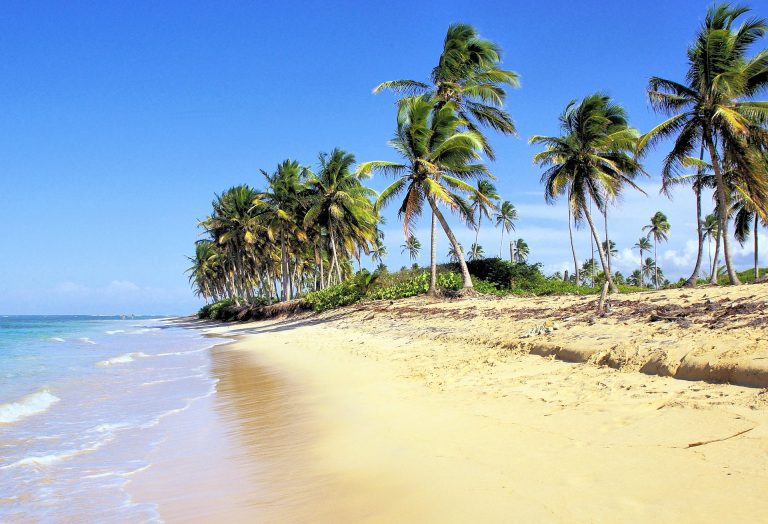ARGENTINA Travel Guide for 2024: Embrace the Spirit

Welcome to our Argentina Travel Guide. Whether you’re an adventurous explorer, a food enthusiast, or a culture aficionado, this guide has everything you need for an unforgettable journey. From breathtaking natural wonders to savoring culinary delights, we’ve curated essential information and valuable tips to ensure your travel experience in Argentina is nothing short of extraordinary.
What to See and Do in Argentina
Whether you’re an experienced traveler out to explore some of the most famous landmarks in Argentina or someone setting foot here for the first time, there’s never a shortage of things to do or sights to see. Here are the best places to visit in Argentina for first-timers.
- Tango in Buenos Aires: Begin your journey in the vibrant city of Buenos Aires. Attend a tango show, take a dance class, or simply enjoy the music at a local milonga.

- Iguazu Falls: Witness the awe-inspiring beauty of Iguazu Falls, one of the world’s most magnificent natural wonders. Explore the trails and viewpoints to get up close to the thundering waterfalls.

- Perito Moreno Glacier: Marvel at the imposing Perito Moreno Glacier in Los Glaciares National Park. Experience the breathtaking sight of ice calving into the turquoise waters of Lake Argentino.

- Explore Patagonia: Discover the wild and rugged landscapes of Patagonia. Hike through Torres del Paine National Park, go whale watching in Peninsula Valdes, or trek on Perito Moreno Glacier.

- Ushuaia and Tierra del Fuego: Visit the “End of the World” in Ushuaia, the southernmost city in the world. Explore Tierra del Fuego National Park and take a boat tour along the Beagle Channel.

- Hiking in El Chaltén: Lace up your hiking boots and explore the hiking trails of El Chaltén, the “Trekking Capital of Argentina.” Enjoy breathtaking views of Fitz Roy and Cerro Torre.

Fast Facts About Argentina
- Climate: Argentina’s climate varies from region to region. In the north, you’ll experience a subtropical climate with hot summers and mild winters. The central areas have a temperate climate, while the southern regions, including Patagonia, have a cooler climate with harsh winters.
- Local Currency: The official currency of Argentina is the Argentine Peso (ARS). ATMs are widely available in cities, but it’s recommended to carry some cash, especially when traveling to remote areas.
- Power Voltage: The standard power voltage in Argentina is 220V, and the plugs have two or three round pins (Type C and Type I). Don’t forget to bring suitable adapters for charging your electronic devices.
- Language: Spanish is the official language of Argentina. While English is spoken in major tourist areas and hotels, knowing some basic Spanish phrases can be beneficial for smoother communication.
- Religion: The predominant religion in Argentina is Roman Catholicism, but the country embraces religious freedom, and you’ll find diverse religious communities.
- Safety: Argentina is generally safe for travelers. Exercise caution in crowded places and be mindful of pickpocketing, especially in touristy areas. It’s best to keep your valuables secure and avoid displaying signs of wealth.
- Cultural Etiquette: Argentinians are known for their warm hospitality. Embrace the local customs and greet people with a kiss on the cheek when meeting them. When invited to someone’s home, bringing a small gift, such as a bottle of wine or chocolates, is appreciated.
- Tipping: Tipping is common in Argentina. In restaurants, a gratuity of around 10% is customary if service is not included. Tipping taxi drivers and hotel staff for exceptional service is also appreciated.
When to Visit Argentina: Seasons and Festivals
Here’s a breakdown of the seasons and notable festivals to consider when you plan a trip to Argentina.
Spring (September to November) and Fall (March to May)
These are the shoulder seasons in Argentina, when the weather is generally pleasant, the crowds are fewer, and the prices are lower. These are the best times to visit Buenos Aires and the surrounding Pampas, where you can enjoy the city’s cultural and gastronomic delights, as well as the gaucho traditions of the countryside. Spring and fall are also ideal for visiting central Argentina, such as the historic city of Córdoba, the picturesque town of Salta, and the colorful landscapes of the Quebrada de Humahuaca.
Spring and fall are also good times to visit the southern regions of Patagonia and Tierra del Fuego, where the temperatures are milder and the wildlife is more active. You can hike in the national parks of Los Glaciares and Tierra del Fuego, see the impressive Perito Moreno Glacier, and cruise along the Beagle Channel. However, be prepared for unpredictable weather and strong winds, especially in the fall.
Some of the festivals and events that take place in spring and fall are:
- The Buenos Aires International Festival of Independent Cinema (BAFICI) in April, showcasing the best of Argentine and international indie films.
- The Grape Harvest Festival (Fiesta Nacional de la Vendimia) in March, celebrating the wine culture of Mendoza with parades, concerts, and tastings.
- The National Folklore Festival (Festival Nacional del Folklore) in January, featuring traditional music and dance from all over the country in the town of Cosquín.
- The Day of Tradition (Día de la Tradición) in November, honoring the gaucho heritage with rodeos, barbecues, and folkloric shows in San Antonio de Areco.
Summer (December to February)
This is the peak season for tourism in Argentina, especially in the southern regions of Patagonia and Tierra del Fuego, where the weather is warmer and the days are longer. This is the best time to visit these areas if you want to enjoy outdoor activities such as hiking, kayaking, fishing, and camping. You can also see the amazing wildlife of the region, such as penguins, whales, sea lions, and birds.
Summer is also a good time to visit the northern regions of Argentina, such as the tropical rainforest of Iguazú Falls, the arid desert of the Puna, and the humid wetlands of the Esteros del Iberá. The temperatures are hot and humid, but you can cool off in the waterfalls, rivers, and lakes.
Some of the festivals and events that take place in summer are:
- The Carnival (Carnaval) in February, featuring colorful costumes, music, and dancing in the streets of various cities, especially in the north.
- The Hops Festival (Fiesta del Lúpulo) in February, celebrating the beer production of the Lake District town of El Bolsón with live music and craft beer.
- The Tango Festival and World Cup (Festival y Mundial de Tango) in August, showcasing the best of the national dance in Buenos Aires with performances, classes, and competitions.
Winter (June to August)
This is the low season for tourism in Argentina, except for the ski resorts in the Lake District, Mendoza, and Tierra del Fuego, where winter sports enthusiasts can enjoy the snow and the slopes. Winter is also a good time to visit Buenos Aires and the Pampas, where the weather is mild and the city is less crowded.
Winter is not the best time to visit the southern regions of Patagonia and Tierra del Fuego, where the weather is cold and the days are short. Many roads and attractions are closed or inaccessible, and the wildlife is scarce. However, if you are looking for a challenge and a unique adventure, you can still visit these areas and witness the beauty and solitude of the winter landscape.
Some of the festivals and events that take place in winter are:
- The Chocolate Festival (Fiesta Nacional del Chocolate) in July, celebrating the chocolate industry of the Lake District city of Bariloche with tastings, workshops, and a giant chocolate egg.
- The Snow Festival (Fiesta Nacional de la Nieve) in August, featuring winter sports, concerts, and fireworks in the Lake District town of San Martín de los Andes.
- The Independence Day (Día de la Independencia) in July, commemorating the declaration of independence from Spain in 1816 with patriotic ceremonies and festivities throughout the country.
How to Get Around Argentina
Here are the best ways to get around to consider when planning your Argentina trip:
- Plane: Flying is the fastest and easiest way to cover long distances in Argentina, especially if you have limited time or want to visit multiple regions. Argentina has a good network of domestic flights, operated by airlines such as Aerolíneas Argentinas, LATAM, Flybondi, and JetSmart. You can find flights to major cities and tourist destinations, such as Buenos Aires, Córdoba, Mendoza, Salta, Bariloche, El Calafate, Ushuaia, and Puerto Iguazú.
- Bus: Buses are the most popular and cost-effective way to travel around Argentina, as they are generally modern, comfortable, and reliable. You can find buses to almost any destination in the country, from big cities to small towns, and from the Andes to the Atlantic coast. Buses offer different classes of service, from semi-cama (semi-sleeper) to cama (sleeper) to ejecutivo (executive), with varying degrees of comfort and amenities.
- Train: Trains are not very common or convenient in Argentina, as the rail network is limited and outdated. However, there are some train routes that are worth taking for their historical or cultural value, or for their spectacular scenery. For example, you can take the Tren a las Nubes (Train to the Clouds) from Salta to the high-altitude town of San Antonio de los Cobres, crossing stunning bridges and viaducts along the way. You can also take the Tren Patagónico (Patagonian Train) from Viedma to Bariloche, passing through the vast and rugged landscapes of Patagonia. Or you can take the Tren del Fin del Mundo (Train of the End of the World) from Ushuaia to the Tierra del Fuego National Park, following the route of the old prison train.
- Car: Renting a car gives you more freedom and flexibility to explore Argentina at your own pace and get off the beaten track. This is especially useful in regions such as Patagonia, Tierra del Fuego, and the northwest, where public transport is limited or infrequent, and where you can find some of the most amazing natural attractions and national parks in the country.
- Bike: Biking is a fun and eco-friendly way to get around Argentina, especially in urban areas and flat regions. You can find bike rentals and bike tours in many cities, such as Buenos Aires, Córdoba, Mendoza, and Rosario, where you can enjoy the sights, sounds, and flavors of the local culture. You can also find bike trails and bike-friendly routes in some natural areas, such as the Lake District, the Pampas, and the Esteros del Iberá.
- Horseback Riding: In rural regions like Patagonia and Salta, consider horseback riding tours to experience the natural beauty and cultural heritage of Argentina.
Where to Stay in Argentina: Accommodation Tips
Here are some tips and recommendations for finding the best places to stay during your Argentina travel adventure:
Hotels: Hotels are the most traditional and widely available accommodation option in Argentina, ranging from luxury to budget, from international chains to local boutiques, and from urban to rural. You can find hotels in almost every city and town in the country, offering different levels of comfort, service, and amenities. Some of the best hotel booking websites for Argentina are: Oda, Booking.com, Hotels.com.
Hostels: Hostels are the most popular and cost-effective accommodation option for backpackers, solo travelers, and young people in Argentina, as they are generally cheap, social, and fun. You can find hostels in many cities and tourist destinations in the country, offering dorm beds or private rooms, shared bathrooms and kitchens, and common areas such as lounges, gardens, and terraces. Some of the best hostel booking websites for Argentina are: Hostelworld, Hostels.com, Hostelbookers.
Apartments: Apartments are a growing and convenient accommodation option for travelers who want more space, privacy, and flexibility in Argentina, especially in big cities like Buenos Aires, Córdoba, and Mendoza. You can find apartments for rent in various neighborhoods, sizes, and styles, offering fully equipped kitchens, living rooms, bedrooms, and bathrooms. Apartments are a good option if you want to feel like a local, cook your own meals, and stay longer in one place. Some of the best apartment booking websites for Argentina are: Airbnb, HomeAway, FlipKey.
Estancias: Estancias are traditional ranches or farms that offer accommodation and activities in the countryside of Argentina, especially in the Pampas, Patagonia, and the northwest. You can find estancias of different sizes, styles, and prices, offering cozy rooms, homemade meals, and authentic experiences. Estancias are a great option if you want to enjoy the rural culture and nature of Argentina, as well as activities such as horseback riding, hiking, fishing, and wildlife watching. Some of the best websites for finding and booking estancias in Argentina are: Estancias Argentinas, Argentina Polo Day, Say Hueque.
Argentina Travel Guide: Money-Saving Tips
Here are some practical money-saving tips to help you make the most of your budget during your Argentina travel adventure:
- Use discount cards: If you are a student, a teacher, or a senior, you can get discounts on many attractions, museums, transport, and services in Argentina. You can also use the La Nacion Club card, which gives you discounts on restaurants, hotels, cinemas, and more.
- Hitchhike: While not common in the north of the country, if you are in Patagonia, you will see many travelers hitchhiking along the scenic routes. This is a cheap and adventurous way to get around, as well as a chance to meet locals and other travelers. However, be careful and use your common sense, and always carry some cash in case you need to take a bus or a taxi.
- Cook your own meals: Eating out in Argentina can be expensive, especially in touristy areas and big cities. If you want to save money and try some local ingredients, you can cook your own meals in your hostel or apartment. You can also buy empanadas, sandwiches, and pastries from street vendors or kiosks for a cheap and quick snack.
- Travel by bus: Buses are the most popular and affordable way to travel around Argentina, as they are comfortable, reliable, and frequent. You can find buses to almost any destination in the country, from big cities to small towns, and from the Andes to the Atlantic coast.
- Avoid peak season: Argentina is a year-round destination, but the peak season is from December to February, when the weather is warmer and the holidays are in full swing. This is also the most crowded and expensive time to visit, especially in the southern regions of Patagonia and Tierra del Fuego, where the demand for accommodation and tours is high.
- Stay in hostels: Hostels are the best option for budget travelers in Argentina, as they are cheap, social, and fun.
- Use public transport: Taxis and private cars can be expensive and unnecessary in Argentina, especially in big cities like Buenos Aires, Córdoba, and Mendoza, where you can find efficient and cheap public transport systems. You can use buses, subways, trains, and trams to get around the city, as well as to and from the airports. You will need to buy a rechargeable card called SUBE, which you can use for all modes of transport and pay as you go.
- Drink tap water: Bottled water can be expensive and wasteful in Argentina, especially if you are traveling for a long time or in remote areas. Luckily, tap water is safe and drinkable in most parts of the country, except for some rural and mountainous regions. You can bring your own reusable bottle and refill it at your accommodation, restaurants, or public fountains.
What Food to Try in Argentina: Traditional Cuisine
Here’s a Argentina travel guide to the culinary delights and traditional dishes you must try during your visit:
- Asado: Asado is the quintessential Argentine food, and a social and cultural ritual. It consists of a barbecue of different cuts of meat, such as beef, pork, lamb, chicken, and offal, cooked over a wood or charcoal fire. The meat is seasoned with salt and sometimes chimichurri, a green sauce made of parsley, garlic, vinegar, and oil. Asado is usually accompanied by bread, salads, and wine, and enjoyed with friends and family.
- Empanadas: Empanadas are fried or baked pastries filled with various ingredients, such as meat, cheese, corn, spinach, or ham. They are a popular snack or appetizer, and each region has its own style and flavor. For example, in Salta, the empanadas are spicy and juicy, while in Tucumán, they are small and crispy. Empanadas are often marked with different shapes or patterns to indicate their fillings.
- Locro: Locro is a thick and hearty stew made of corn, beans, potatoes, squash, and meat, such as beef, pork, or chorizo. It is a typical dish of the Andean regions, and a symbol of national identity. Locro is traditionally eaten on May 25, the anniversary of the May Revolution, which marked the beginning of the independence movement from Spain.
- Milanesa: Milanesa is a thin slice of beef, chicken, or veal, coated in breadcrumbs and fried until golden and crispy. It is a simple and satisfying dish, often served with fries, mashed potatoes, or salad. Milanesa can also be topped with cheese, tomato sauce, and ham, and baked in the oven, becoming a milanesa a la napolitana.
- Pizza: Pizza is one of the most popular and ubiquitous foods in Argentina, especially in Buenos Aires, where there are thousands of pizzerias. Pizza in Argentina is influenced by the Italian immigrants, but has its own style and variations. For example, pizza a la piedra is thin and crispy, pizza al molde is thick and fluffy, and pizza a la parrilla is grilled over a fire. The toppings are usually simple, such as cheese, tomato, onion, olives, or anchovies, and the slices are often eaten with fainá, a thin chickpea flour cake.
- Dulce de leche: Dulce de leche is a sweet and sticky caramel made of milk and sugar, cooked slowly until thick and brown. It is a national obsession, and a staple of Argentine desserts. Dulce de leche can be eaten on its own, spread on bread or toast, or used as a filling or topping for cakes, cookies, pancakes, ice cream, and more.
- Alfajores: Alfajores are soft and crumbly cookies, sandwiched with dulce de leche, and sometimes covered with chocolate or coconut. They are a favorite treat for children and adults alike, and a common souvenir for tourists. There are many brands and varieties of alfajores, such as Havanna, Cachafaz, Jorgito, and Terrabusi, and each region has its own specialty, such as the cornstarch alfajores of Córdoba, or the fruit alfajores of Santa Fe.
What to Bring from Argentina: Souvenir Ideas
Bringing home a piece of Argentina is a wonderful way to cherish your Argentina travel memories:
- Mate: Mate is the national drink of Argentina, and a symbol of its social and cultural identity. It is a herbal infusion made of dried leaves of yerba mate, a native plant of South America, steeped in hot water and sipped through a metal straw called a bombilla. Mate is usually shared among friends and family, in a ritual of hospitality and friendship. To bring home a piece of this tradition, you can buy a mate set, which consists of a gourd (the container for the mate), a bombilla, and a bag of yerba.
- Leather: Leather is one of the most renowned and high-quality products of Argentina, thanks to its abundant cattle industry and its skilled artisans. You can find leather goods in various forms, such as jackets, shoes, belts, bags, wallets, and more.
- Wine: Argentina is one of the world’s top wine producers, and a paradise for wine lovers. Its wine regions, such as Mendoza, Salta, and Patagonia, offer a wide range of wines, from the famous Malbec to the Torrontés, from the Cabernet Sauvignon to the Pinot Noir.
- Dulce de leche: It is one of the most popular and beloved treats in Argentina, and a staple of its desserts. Dulce de leche is a mouthwatering and indulgent souvenir, that can satisfy any sweet tooth.
- Tango: Tango is the iconic dance and music of Argentina, and a expression of its passion and soul. Tango is a cultural and artistic souvenir, that can bring back the rhythm and emotion of Argentina. You can buy tango CDs, DVDs, books, or posters.






